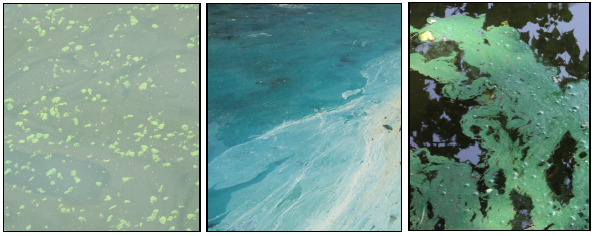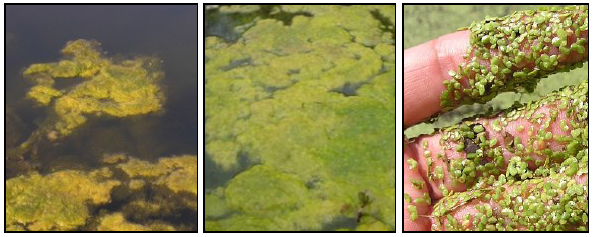Blue-green algae, also called cyanobacteria, are actually bacteria that have features in common with algae. Many of them are green or blue-green in colour and some species have the ability to produce toxins. These toxins can make humans or animals sick if they're exposed to high concentrations.
Blue-green algae are always present in lakes, reservoirs and rivers, but usually in very small numbers. Under the right conditions, they can reproduce rapidly to form large mats or scums referred to as blooms. These blooms typically form in late summer or early fall in areas where water is slow moving and warm. Wind and wave action can cause the bloom to move or break up, so a bloom may be visible in an area one day and gone the next.
Blue-green algae blooms often look like thick pea soup or large areas of spilled paint on the surface of the water. Fresh blooms usually smell like fresh cut grass. As a bloom becomes established, it begins to smell like rotting garbage.

The above examples show strains of Microcystis, Anabaena, and Planktothrix blooms. (Photo Credit: Ohio Environmental Protection Agency)

